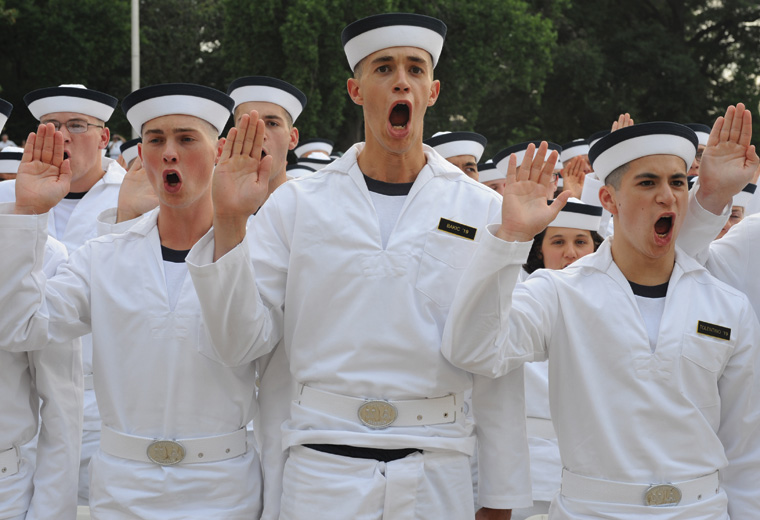
Plebe year is the first step in becoming a member of the Brigade of Midshipmen at the U.S. Naval Academy. This initial year is tough by design, intended to change young men and women from high school seniors, college students, and prior enlisted sailors and Marines into midshipmen. In addition to the rigors of academia and physical standards, plebes perform a multitude of extra tasks that help them gain skills that will assist them not only in their Academy careers, but in their future military and civilian careers, as well. Plebe year is a challenge for everyone, but it is not the same for every individual. Midshipmen come from diverse regions and cultures, thus the experience can differ greatly from person to person.
I am a member of the class of 2019 at the Naval Academy and just completed my plebe year. As I prepared to put on a stripe and become a Midshipman Third Class, or “youngster,” I began to reflect on how I have changed, the people I have met, and what I have learned about myself and the Academy. Looking back on plebe summer, the six weeks of plebe basic training, and plebe year, I have a range of emotions, from joy to anger. I have had many great experiences in the past year, but also a few negative ones.
My experience of plebe year is different from most of my classmates. When I graduated high school in 2013, I did not have the academic credentials to gain an offer of appointment when I applied to the Naval Academy the first time. I tried three times before I was selected to join the class of 2019. In the meantime, I joined the Red-Stick Battalion at Southern University NROTC in Baton Rouge, Louisiana. I loved every minute of it, and I loved everyone in the unit, but I always dreamed of attending the Academy. When I finally received an offer of appointment, I already was a Midshipman Second Class, the equivalent of a college junior. So by coming to the Academy, I took a two-year demotion to restart as a plebe.
Going through two years of NROTC gave me an unusual perspective on plebe year. Being yelled at did not bother me, because none of the midshipmen yelling at me compared to my gunnery sergeant at NROTC. Because I am older and a prior Second Class, I always tried to see the reason behind the training the Second Class was doing for us. Some aspects of the training were useful and practical, others less so. For example, instructions on the proper wear of uniforms and developing good study habits were of little value for me because every uniform we wear at the Academy is the same as at NROTC, and having completed two years of college, I already had study habits that fit me. At both the Academy and in NROTC, Fourth Classmen are treated in much the same way, as if they they know nothing. Of course, as far as military knowledge goes, this generally is true.
The most infuriating thing I have run into at the Academy is that many midshipmen look down on NROTC and make uninformed claims, such as that the program does not produce quality officers. Every time I hear that statement, I politely correct the speaker. Becoming a quality officer in the Navy or Marine Corps is not determined by where a person earns a commission, but by the person’s quality of character. Both programs have proven track records for producing skilled officers. The two programs are different, but they are similar in many important aspects, including their emphasis on professional development and physical training.
Looking back at both my Fourth Class years, I am amazed at how similar they were. During both years I met great people who genuinely care about everyone around them, and I also met the most selfish careerists. There are many days here at the Naval Academy that I greatly miss NROTC and all my friends who will commission next spring. At times I have rethought my decision to leave halfway through a commissioning source and start over. But I realize the past has made me who I am today. I am a U.S. Naval Academy midshipman.



